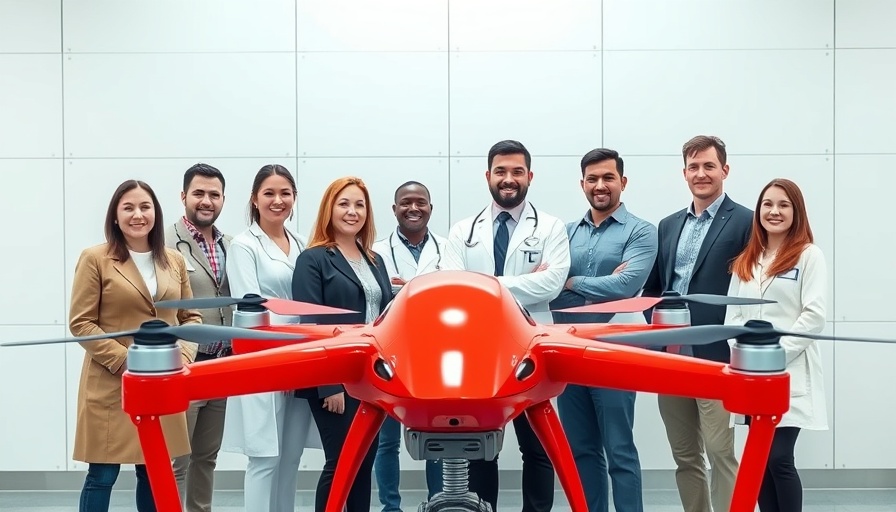
Transforming Medical Supply Chains: Skyports' Drone Delivery Launch in Belgium
In a groundbreaking initiative, Skyports Drone Services has rolled out an on-demand medical drone delivery service in Kempen, Belgium, to expedite the transportation of critical medical cargo. This pilot program, launched on August 1, partners with AZ Turnhout, a leading healthcare provider in the region. By utilizing drones to ferry supplies between AZ Turnhout St Jozef and AZ Herentals hospitals, this service highlights a pivotal shift towards innovation in healthcare logistics.
Streamlined Operations: How Drones Redefine Emergency Deliveries
The new delivery system operates Beyond Visual Line of Sight (BVLOS) and is managed remotely from Skyports’ Remote Operations Centre (ROC) located in Buckinghamshire, UK. This unique regulatory achievement allows the incorporation of drone technology into healthcare supply chains, enhancing efficiency over traditional road delivery methods.
Using the RigiTech Eiger and Speedbird DLV-2 drones, Skyports can significantly cut down delivery times—travelling an 18.7 km distance in just 13 minutes with the Eiger, compared to an average of 30 minutes by road, and covering 4.4 km in 7 minutes with the DLV-2 versus 16 minutes for conventional methods. This advancement underscores the urgent need for rapid medical supply delivery, especially in critical situations.
Technology Meets Healthcare: The Importance of Regulatory Approvals
A noteworthy aspect of this project is the regulatory progression that allows for remote piloting of drones. The approval not only paves the way for Skyports to scale this network but also significantly reduces costs associated with medical transportation. The drones are equipped with airspace receivers and precise landing QR barcodes, ensuring they integrate seamlessly with existing air traffic, thereby elevating safety standards during operations.
Personalized Care: Elevating Patient Services Through Innovation
Skyports’ venture is not just about logistics; it’s about reshaping the way patients receive care. Jef Geudens, Head of Technology at Skyports, highlighted how rapid transport can centralize laboratory resources in specialized hubs, ultimately leading to more personalized treatment options for patients, such as specific chemotherapy deliveries.
Griet Braekmans, Project Manager at AZ Turnhout, echoed this sentiment by explaining that the collaboration focuses on efficient and sustainable transportation methods. Drones serve to enhance the synergy between hospitals, providing faster access to critical medical supplies and fostering better patient outcomes.
The Future of Medical Drone Deliveries: A Vision Beyond the Trials
This pilot program opens the door for a permanent medical drone delivery network in Belgium, with ambitions of establishing automated drone delivery stations capable of operating 24/7. As the technology advances, such systems could revolutionize healthcare delivery, making it more responsive and efficient. Imagine a future where hospitals can swiftly share and receive necessary medications, thus ensuring that patients receive timely care without the constraints of traditional logistics.
Conclusion: The Growing Role of Drones in Healthcare
Skyports' initiative not only marks a significant milestone in drone technology but also sets a precedent for the medical industry worldwide. As we move towards a future shaped by technological innovation, the impact of such advancements extends beyond operational efficiency; they serve as catalysts for improved patient care. This project illustrates how embracing new technologies can have profound implications for healthcare delivery, and we are just beginning to scratch the surface of this transformative potential.
 Add Row
Add Row  Add
Add 




Write A Comment